The Console That Changed the Industry
Launched in 2000, the PlayStation 2 (PS2) revolutionized the gaming industry as the best-selling console in history (more than 155 million units). Its hardware brought advanced 3D graphics and features such as DVD playback, turning it into a home entertainment center. The game library, with over 3,800 titles, defined the next generations of games: Grand Theft Auto: San Andreas, Metal Gear Solid 2 and Shadow of the Colossus, just to name a few, raised technical and narrative standards for video games.
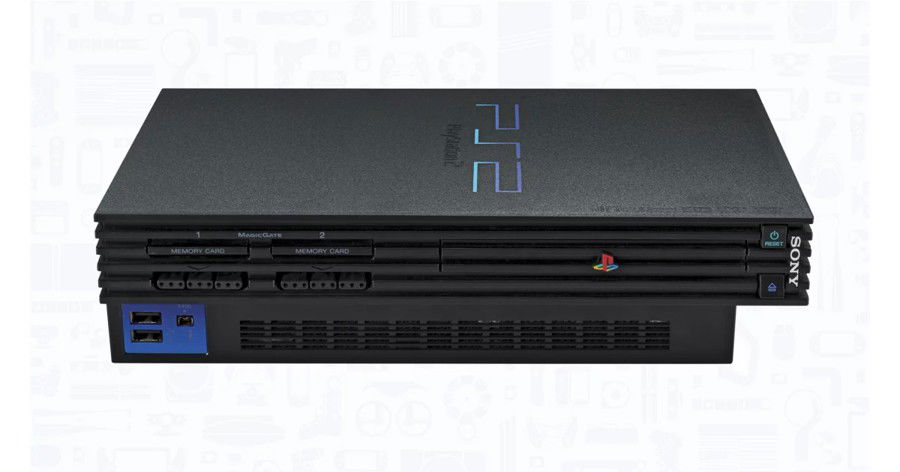
On top of that, the PS2 democratized access to games, with affordable titles and backwards compatibility with PS1 games. The DualShock 2 controller, with analog buttons (sensitive to pressure), influenced the designs of future controllers in the industry. Despite the competition with Xbox and GameCube, it dominated the 6th generation thanks to the diversity in titles.
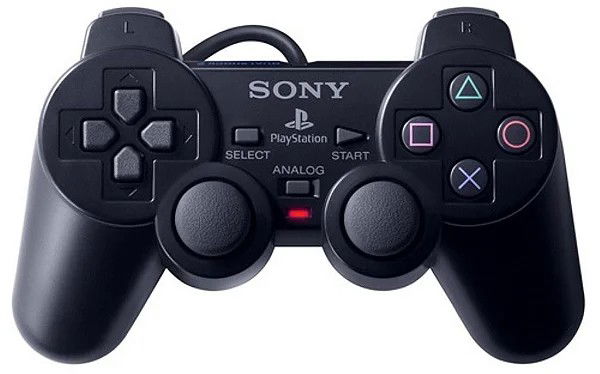
In this article, we’ll look back at 10 classics that were successful on the console and deserve a remake. Games that shaped the industry and were landmarks for their future generations.
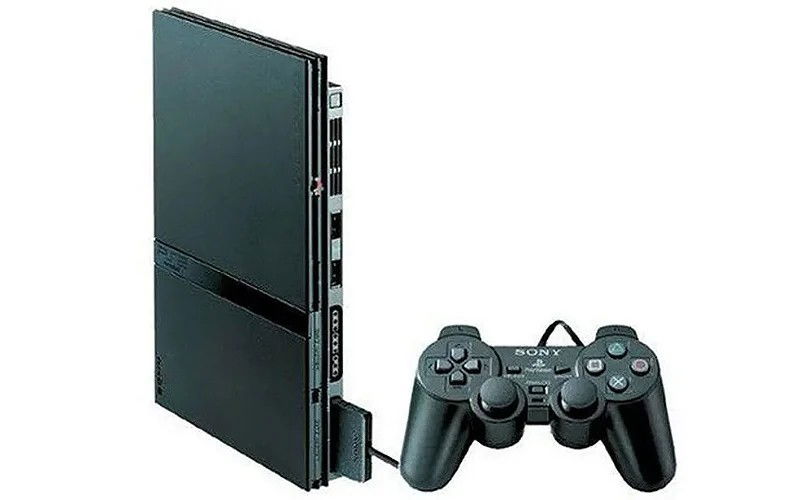
Bully
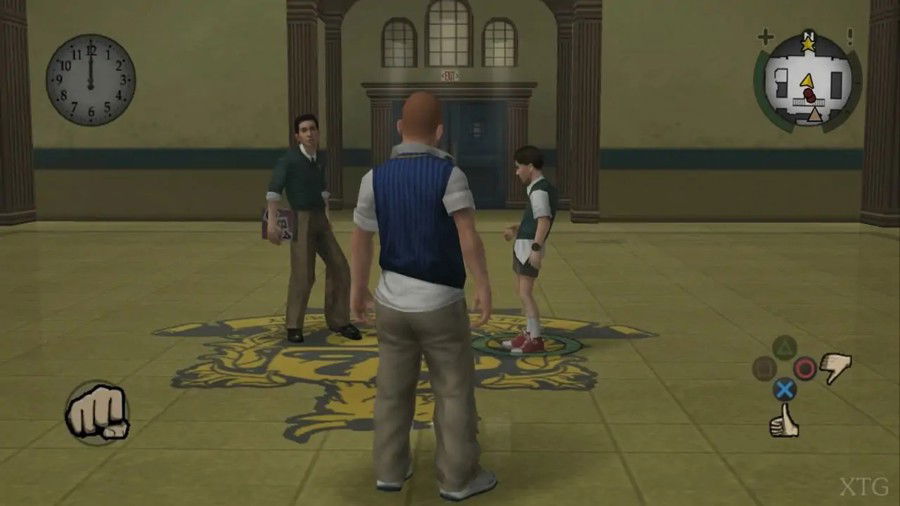
Starting off our list with a game loved by the entire gaming community. This one changed the open-world formula of the Grand Theft Auto series to a completely different setting. Rockstar Vancouver released Bully in 2006. The player controls Jimmy Hopkins, a rebellious teenager in a chaotic boarding school, the Bullworth Academy, where he has to confront bullies, meet nerds and put up with jocks.
All of this, along with the routine of classes and quests, can be considered extracurricular chaos. The game's premise is full of dark humor and social criticism. Even though the game depicts many school fights, it avoids glorifying violence, focusing on a narrative that mixes rebellion and redemption.
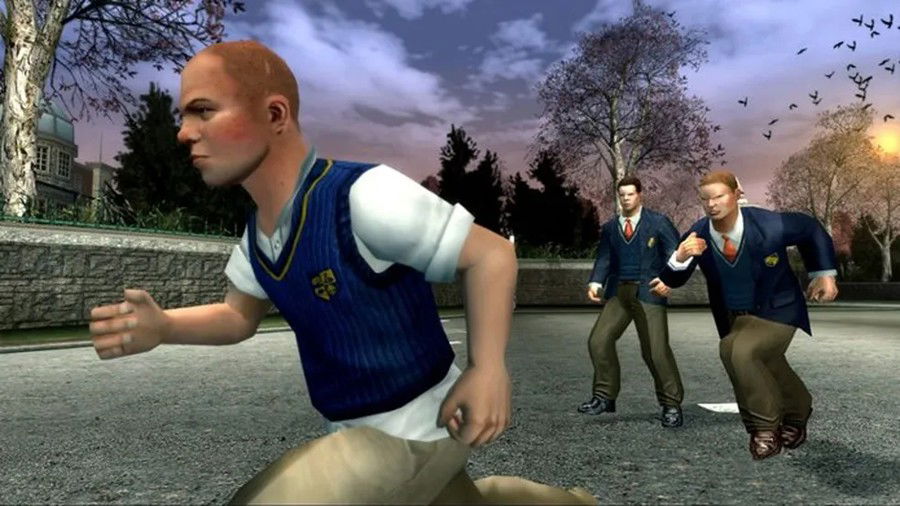
The story’s divided into chapters that balance dark humor and moments of personal growth, such as the complex relationship with the antagonist Gary. Jimmy's progression from a silly student to a leader is interesting. Despite the short campaign, the game has surprising twists and turns and memorable quests, all set within a world full of secrets, bike races and collectibles.
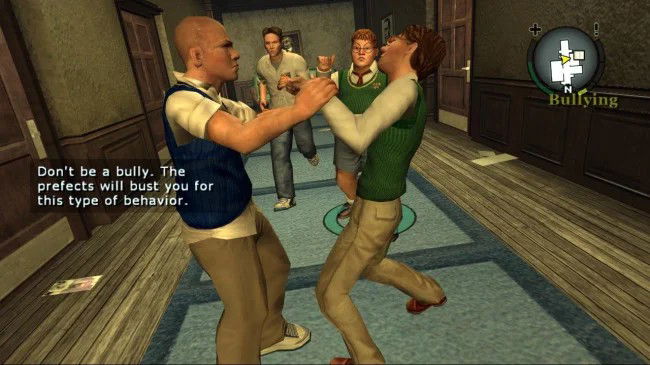
The graphics are beautiful for the PS2 era, and the cartoonish art style and the soundtrack make the game quite enjoyable. The voice acting is a highlight, with dialogues that satirize school stereotypes and social criticism, the game quickly became a favorite among gamers who were victims of bullying at school.
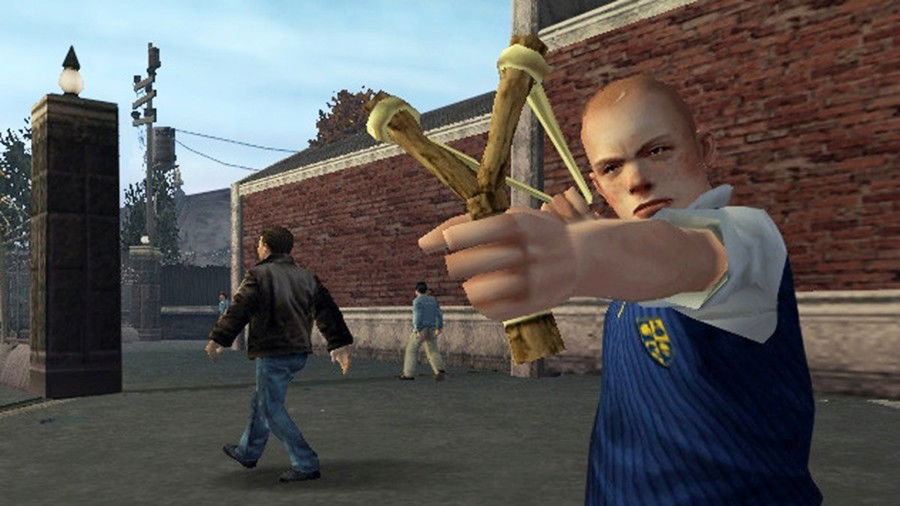
With free exploration, hand-to-hand combat and educational minigames, the classes, like Chemistry and P.E., bring unique skills such as creating bombs or unlocking moves, while quests involve everything from sabotaging rivals to helping very eccentric teachers. Even though Bully's combat system is simple, it’s extremely satisfying, with moves that prioritize humiliation over lethality and weapons that remind us of school days, such as slingshots and stink bombs. Another very interesting thing about the game is the freedom to interact with NPCs, greeting, teasing or even kissing them to regain health.
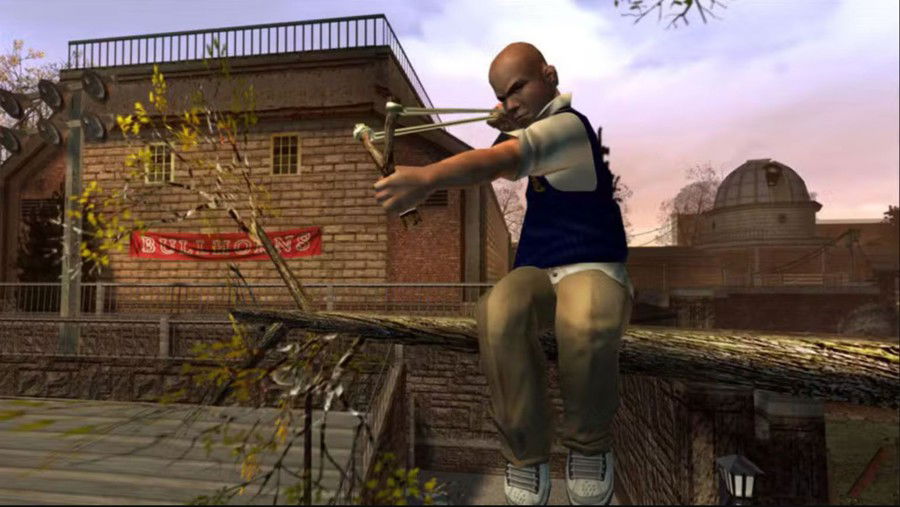
Bully is a PS2 gem, mixing sharp social criticism with diverse gameplay. Its unique approach to the open-world genre with iconic characters makes this game a beloved classic for millions of players.
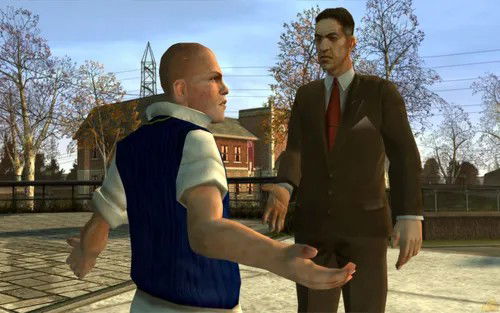
Devil May Cry (Series)
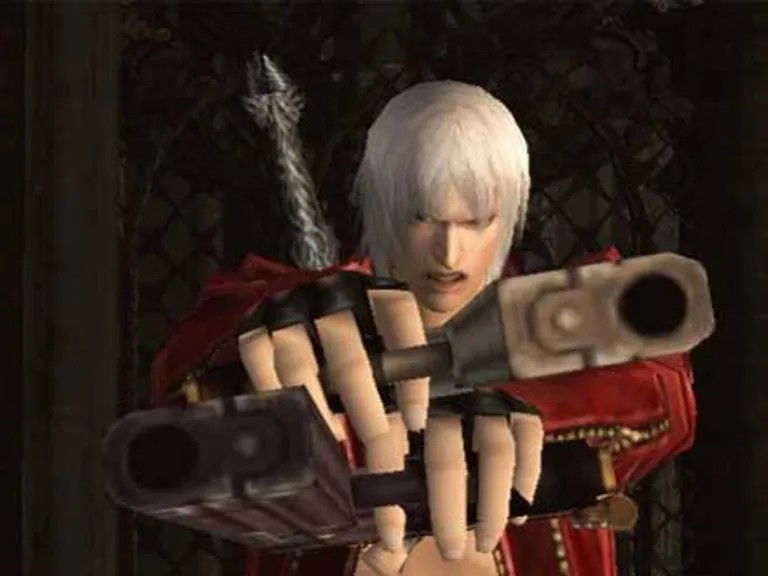
Released by Capcom in 2001, Devil May Cry was revolutionary in the hack-and-slash genre, with its own stylized combat and a charismatic protagonist, the franchise won over a legion of fans. Dante, a half-demon, half-human demon hunter, went through different environments such as the gothic castle of Mallet Island, fighting demons with frenetic action, puzzles and a narrative full of plot twists, surrounding the search for revenge against the demonic emperor Mundus and later against Vergil.
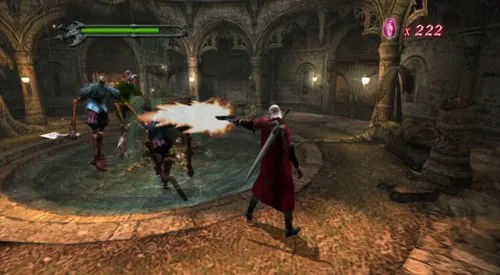
With pre-rendered scenarios and dark lighting, the game brings a gloomy and tense atmosphere, while the soundtrack, heavy with guitars, gives the game a tone of unbridled action. Combat’s at the heart of Devil May Cry, with beautiful, fluid combos using the classic Alastor sword and Ebony & Ivory pistols. The game keeps the player captivated with the on-screen action. The battles’ climax is the Devil Trigger transformation, which grants Dante supernatural powers. The game also features unforgettable bosses such as the giant spider Phantom and the dragon Griffon.
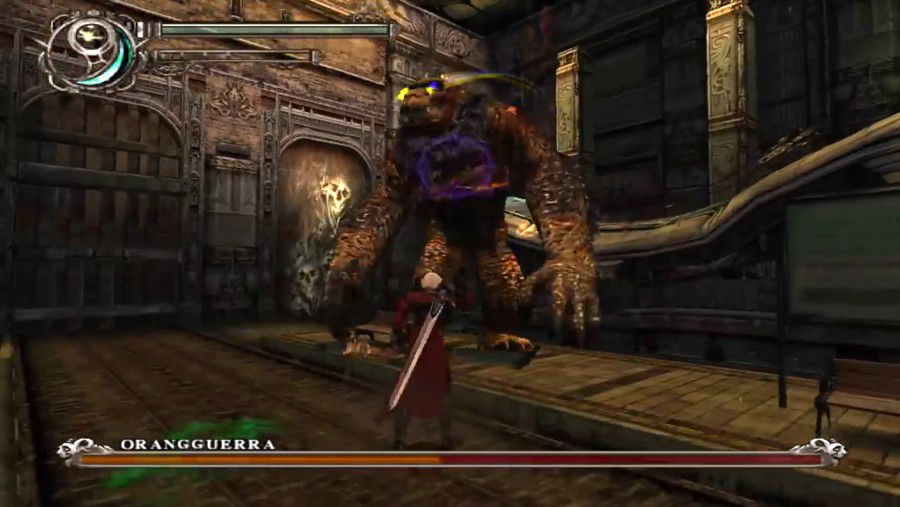
Devil May Cry is one of the “extreme combat” pioneers, influencing later hack-and-slash franchises to come. The game is a sensational and essential PlayStation 2 experience.
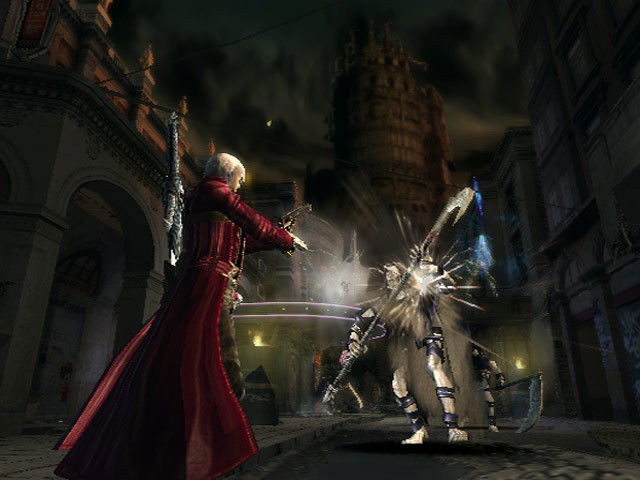
Need for Speed Underground (Series)
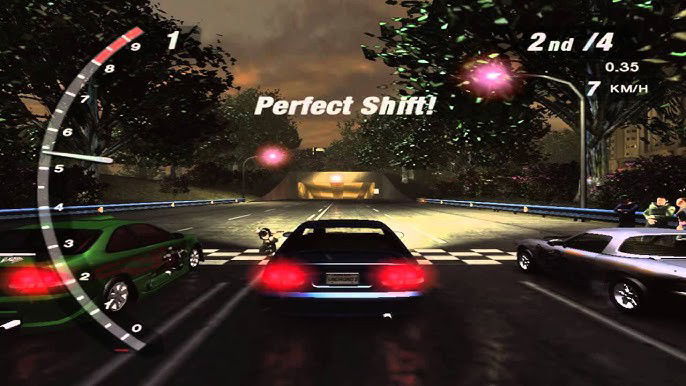
The Need for Speed Underground series reinvented racing games by entering the underground universe of the streets, replacing exotic cars with customizable tuned ones. Released between 2003 and 2004, the game features an immersive narrative that captures the essence of Fast & Furious-inspired car culture, with nighttime racing, neon lights, and pulsating soundtracks.
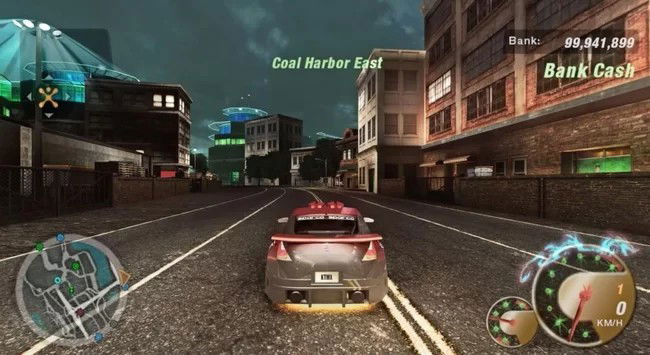
The first Underground introduced modes such as Drift and Drag Racing, mixing unique physics and technical challenges. The Style Points system rewarded risky maneuvers, while the car customization, featuring 20 models such as the Nissan Skyline and Honda Civic, allowed for “millions” of aesthetic and performance combinations. Then, Underground 2 expanded the open world in Bayview, a fictional city with five interconnected districts. More focused on exploration and spontaneous racing, the game cemented the franchise's name, being one of the most beloved racing games of all time.
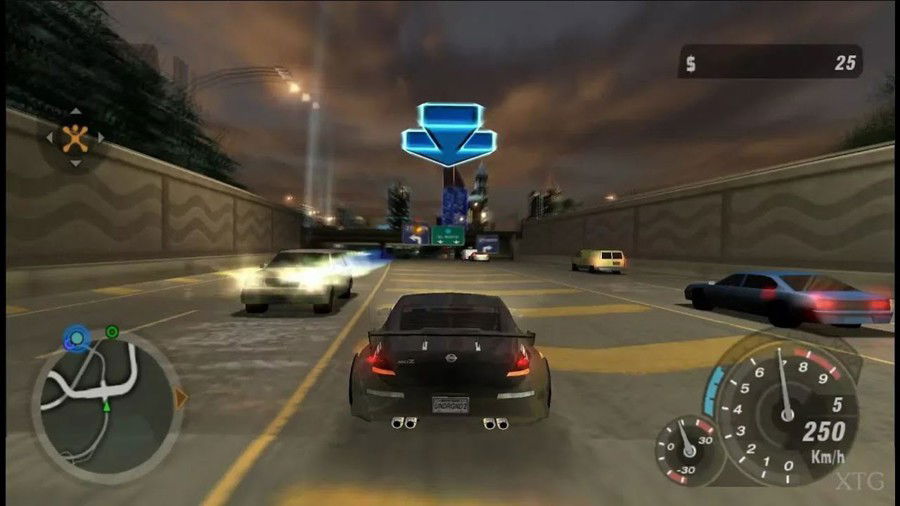
With the success of The Fast and Furious and the popularity of tuned cars reaching an all-time high, the Need for Speed Underground series brought the neon aesthetic to our consoles, and with the detailed graphics for the time, the player felt like Dominic Toretto and Agent Brian O'Conner taking part in the races that happened in urban settings with lights and the vibrant colors of the taillights of the high speed cars. The soundtrack complemented the game, synchronizing electronic beats with the adrenaline from the races, and had hits by Lil Jon, Rob Zombie and The Crystal Method, which defined the series' striking identity.
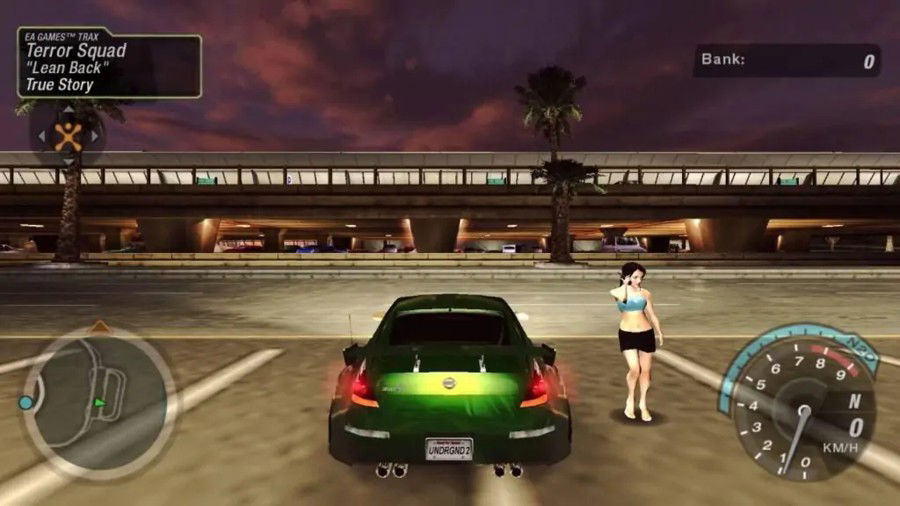
The game also featured the Underground Mode, where players climbed the ranks of the illegal scene. As the player made their way up the gang hierarchy, they gradually unlocked performance parts for their cars and faced rivals like Eddie, leader of the Eastsiders. The campaign, with over 100 events, included everything from racing circuits to duels for pink slips (races where the prize is the opponent's car, totally Fast and Furious, right?), all of which created a sense of belonging to a closed social group in the streets.
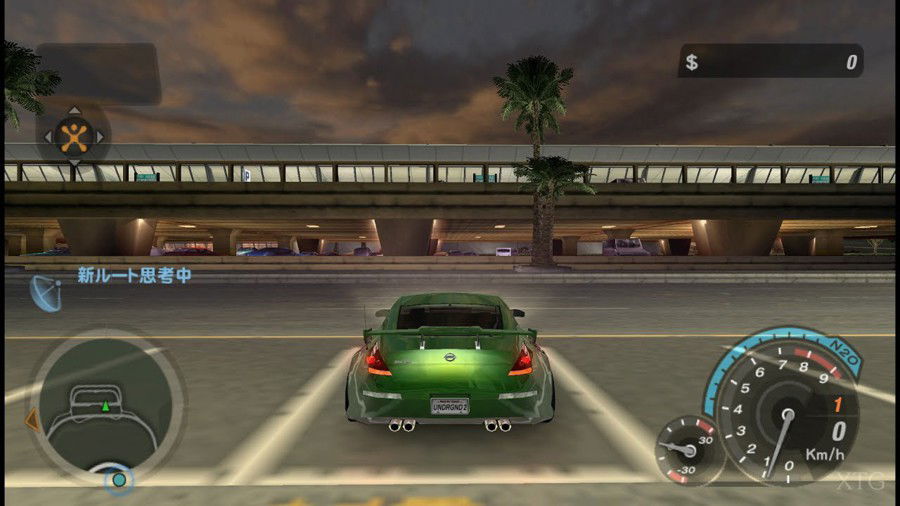
The Need for Speed Underground series is a nostalgic and innovative experience, balancing creative customization, frenetic action and a unique visual identity, the game transports us to a time when the feeling of speed surpassed everything, and all this boldness guaranteed the game a place among the PS2 classics.
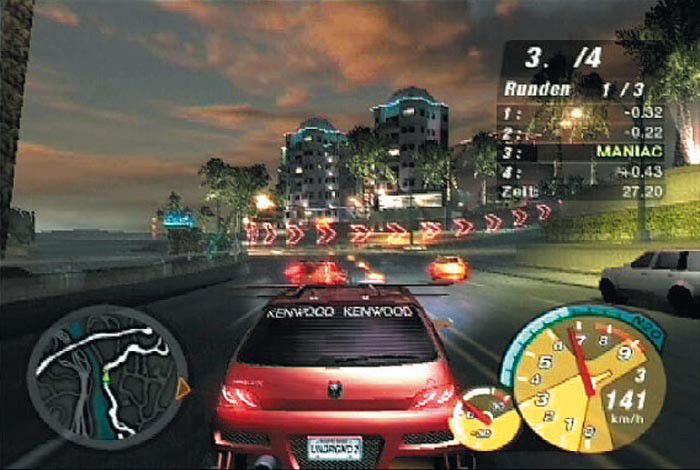
Mortal Kombat: Shaolin Monks
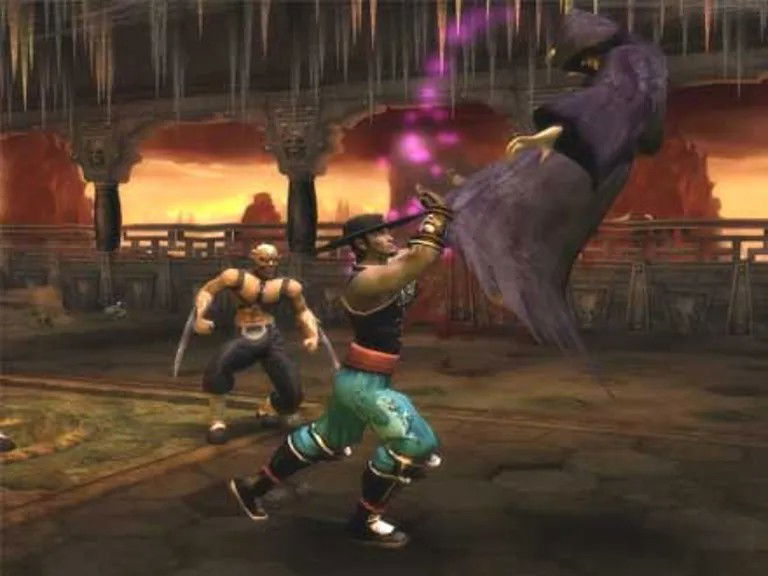
Mortal Kombat: Shaolin Monks is a bold spin-off that abandoned the traditional fighting game format to embrace a co-op action-adventure, set between the events of Mortal Kombat 1 and 2. The game follows Liu Kang and Kung Lao on a journey to stop Shang Tsung and Shao Kahn, mixing frenetic combat with exploration and puzzles in scenarios full of references to the series' mythology.
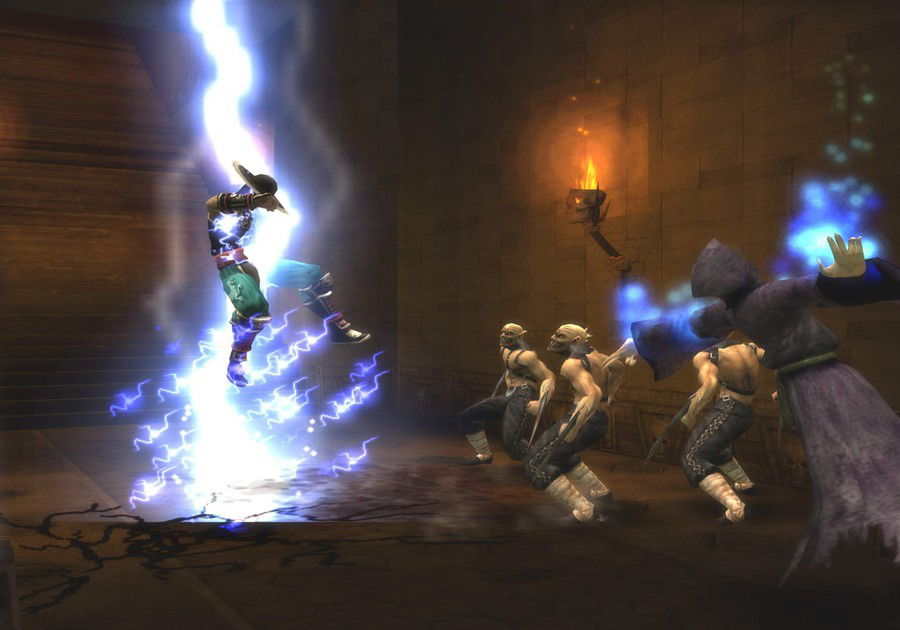
The scenarios of Shaolin Monks recreate the remarkable arenas of MKII (such as the Living Forest and the Dead Pool), with interactive details and an aesthetic that mixes the grotesque and the caricatured (the latter part was most likely to make the game a little lighter-toned so that parents wouldn’t nag the players so much). The soundtrack keeps the tense aspect that the series has and the characters’ animations, although rigid (but good for the time), bring the over-the-top essence of the bloody fights.
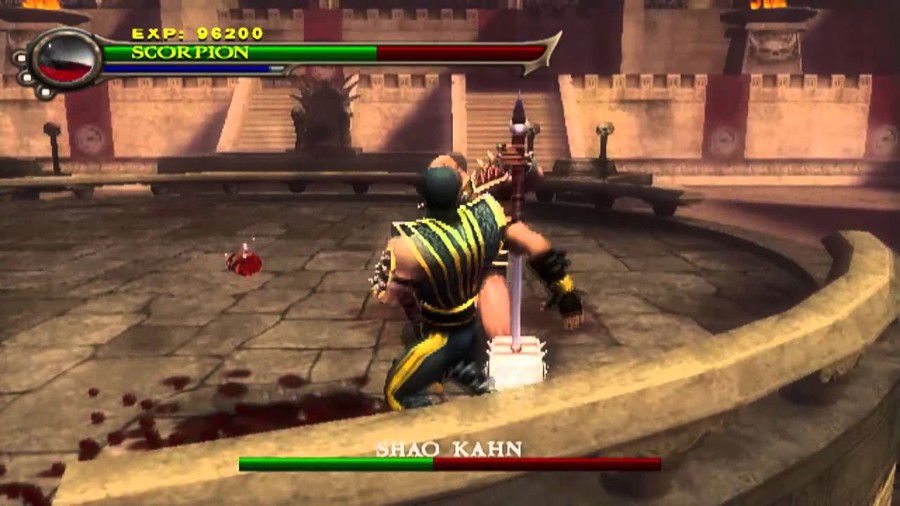
The game has a combat system based on the Multi-Direction Fighting Engine, allowing you to attack in multiple directions, with aerial combos and creative use of the environment, for example throwing enemies into traps such as trees, cannibals or spikes. There’s a co-op mode, bringing to the game the combination of playing one hundred co-op in pairs that can perform team attacks and unlock exclusive areas. Game progression includes unlocking abilities such as Fist of Ruin and classic characters such as Scorpion and Sub-Zero, on top of the classic Mortal Kombat II complete as a bonus for disputes with friends.
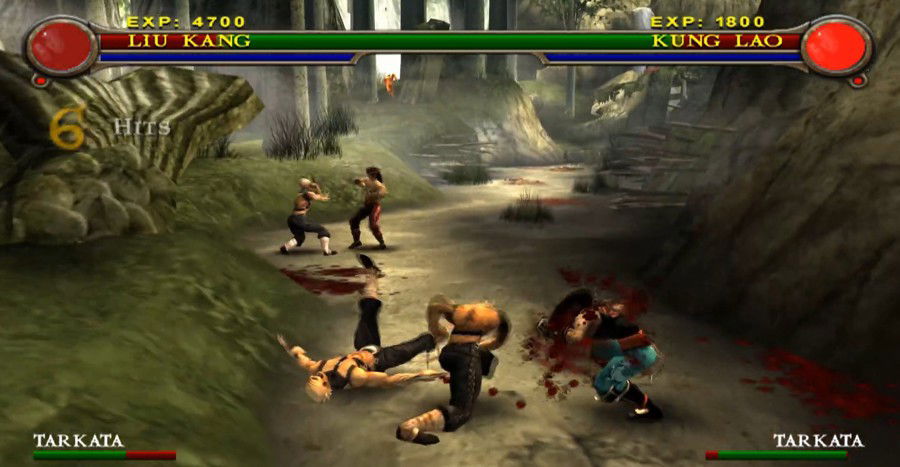
Shaolin Monks is still celebrated to this day for its creativity and fidelity to the Mortal Kombat universe, influencing future co-op action games. The game's reception among fans was so great that today, decades later, there’s still demand for a sequel or remake of this classic.
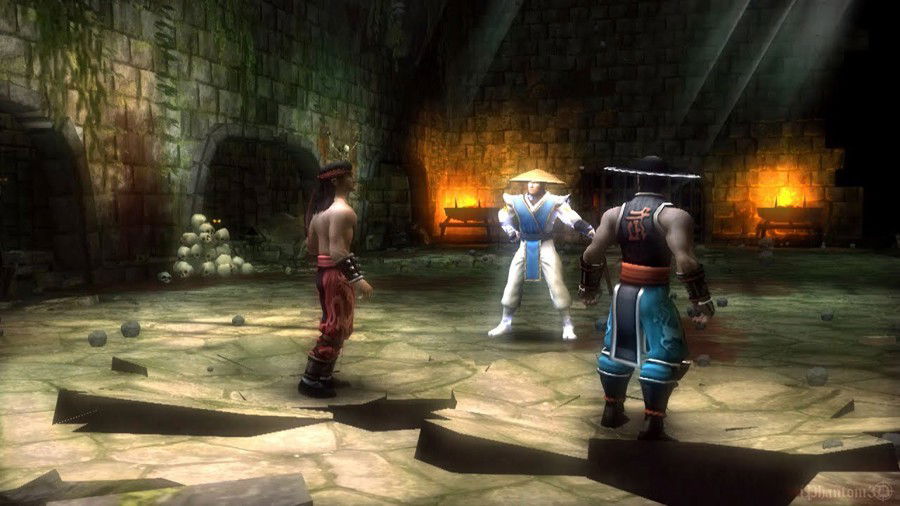
Dark Cloud (Series)

The Dark Cloud series consists of two games, action RPGs that mixes dungeon exploration, city building and fantasy stories with time travel. The first game, Dark Cloud, introduces Toan, a young man chosen to rebuild the world destroyed by the demon Dark Genie. Using the Georama system, the player collects fragments in dungeons to restore villages, in a mixture of narrative progression and the physical reconstruction of the scenarios.
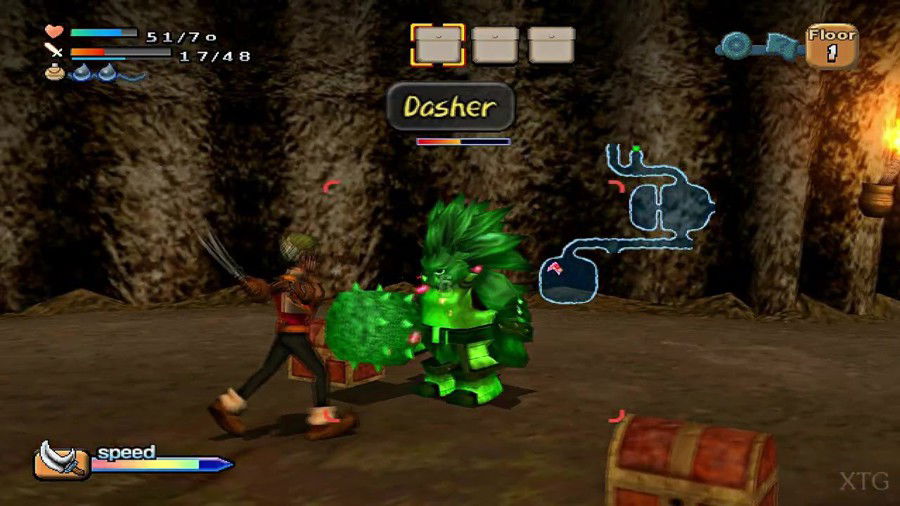
The sequel, Dark Cloud 2, consolidated the game as a classic, improving upon the formula with time travel, more charismatic characters, and an innovative weapons system. In Dark Cloud 2 we’re in a universe with time travel, following Max, a young inventor, and Monica, a warrior from the future. Together, the two go on an epic journey to stop Emperor Griffon from destroying the timeline.
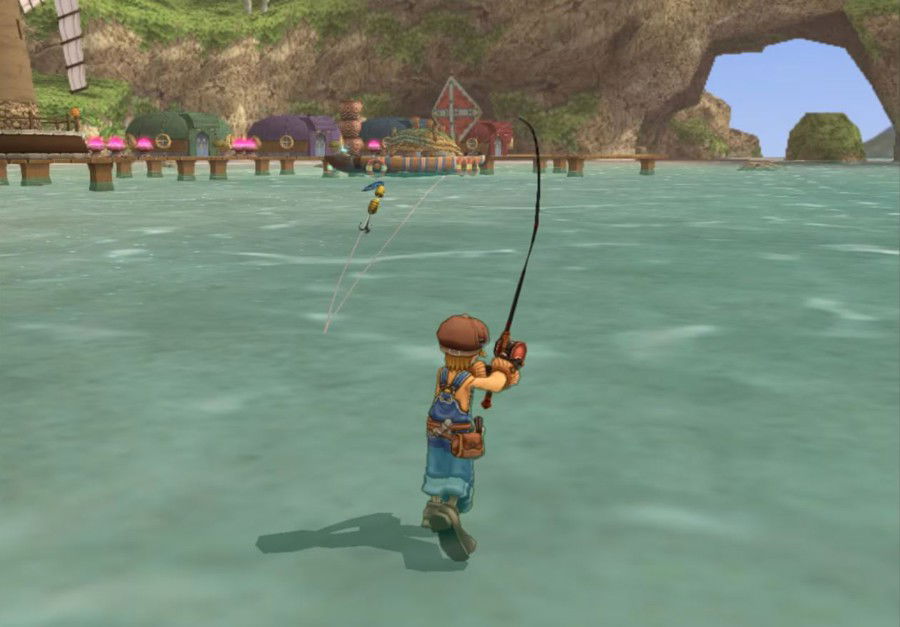
The narrative explores themes such as rebuilding the past to save the future, integrating mechanics from Georama, a system that allows you to rebuild cities with pieces collected in dungeons, bringing strategy to the game. The graphics are cel shaded, with colorful scenarios and stylized characters that give the game its fantasy tone. The music completes Dark Cloud 2 with melancholic and epic themes.
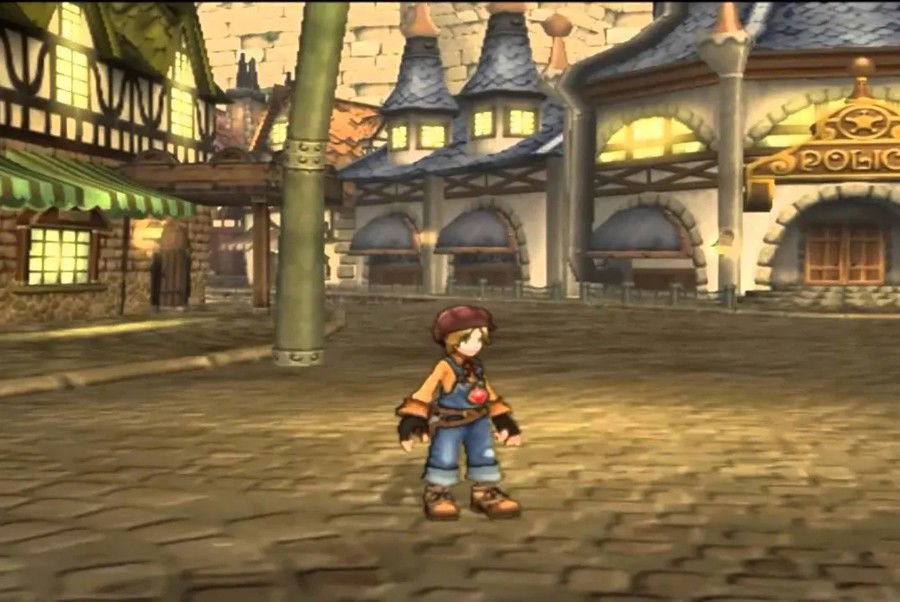
Real-time combat (inspired by Zelda) is fluid, with both melee and ranged attacks. The weapon evolution system stands out with each weapon and, as you gain experience, can be customized with items that allow you to increase attributes such as elemental damage or durability. Secondary mechanics, such as fishing, mini-golf and photo-based inventions, make the game richer.
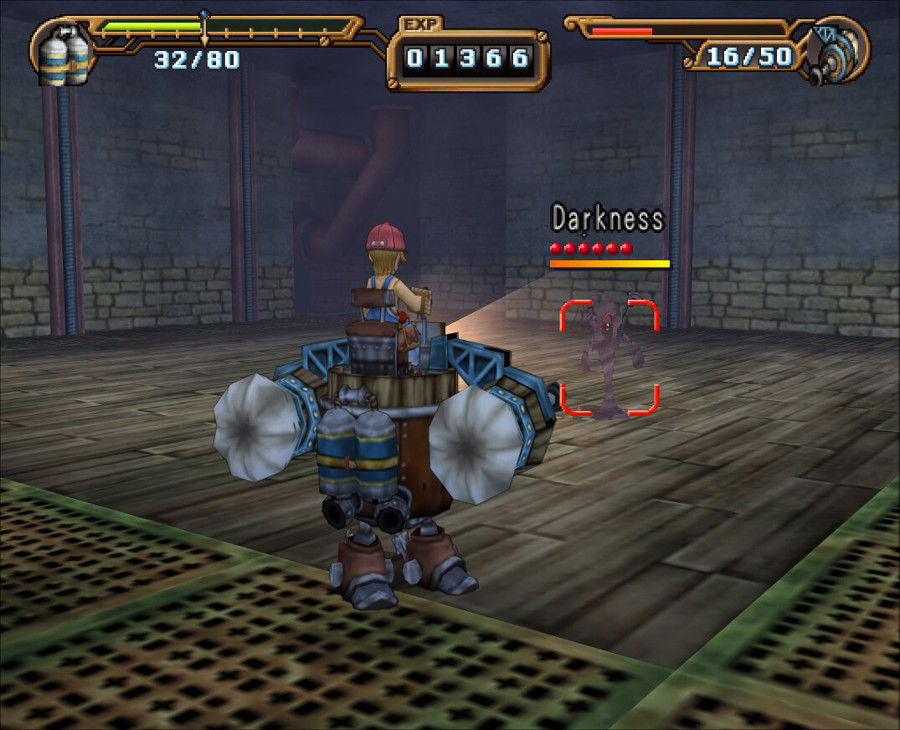
The game’s hailed as a classic, influencing titles such as Ni no Kuni. Its unique blend of action, construction and creativity offers a nostalgic and complex experience for fans of old-school RPGs.
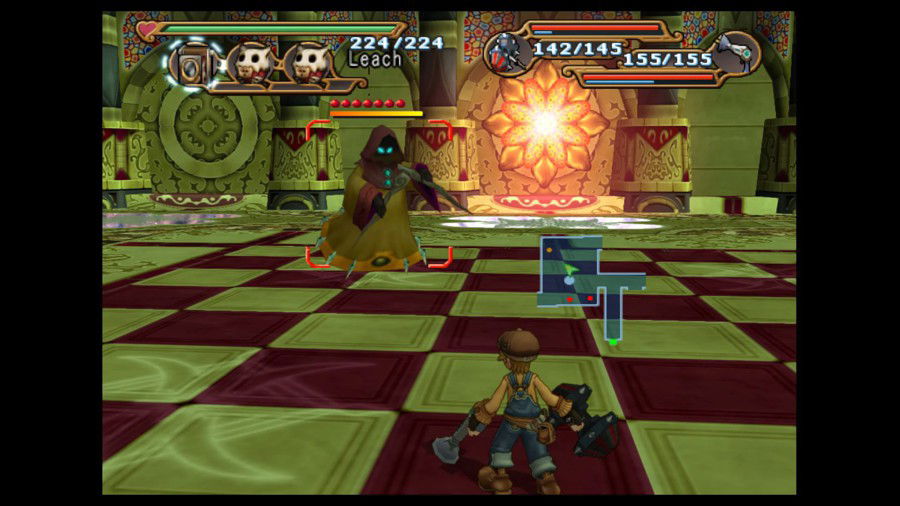
Berserk (Series)
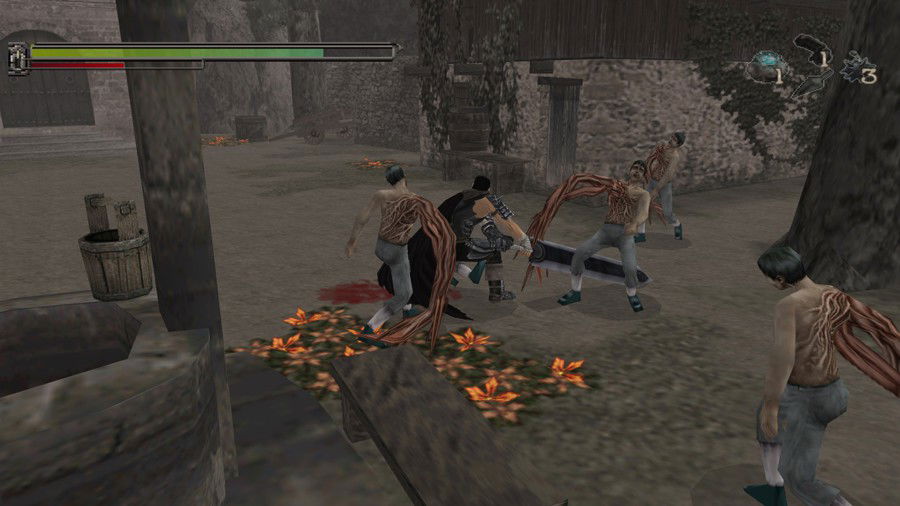
Released exclusively in Japan and Korea, the Berserk game series features two titles: Sword of the Berserk: Guts' Rage (also known as Berserk: Millennium Falcon Hen Seima Senki no Shō), which is a sequel to the Dreamcast original title, improving the formula with more polished combat and a narrative faithful to Kentaro Miura's manga.
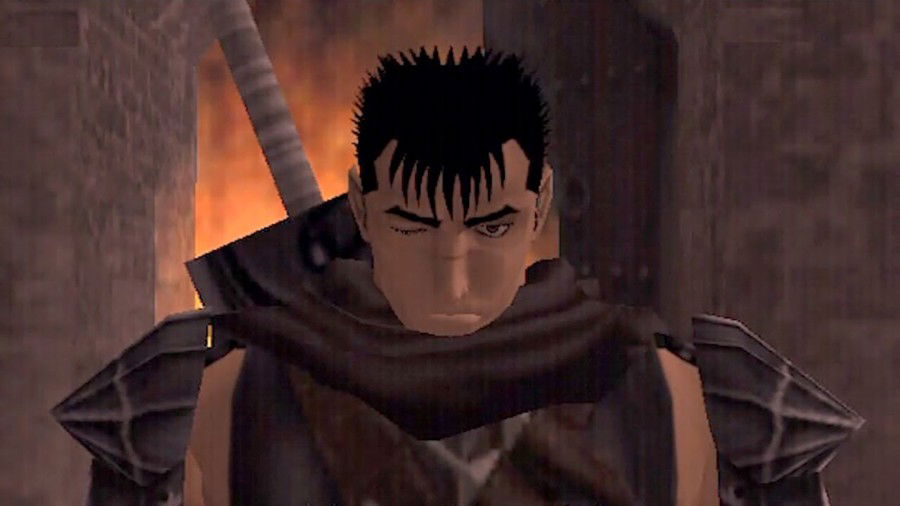
Both the original and its successor are set between volumes 22 and 27 of the Berserk manga, focusing on Guts' quest to cure Casca and face demons like the Apostle Charles, who manipulates illusions of the Band of the Hawk’s former members. The second game expands on the predecessor's gameplay with more refined hack-and-slash combat, allowing you to control the trajectory of the Dragon Slayer and use allies' abilities such as healing and defensive magic.
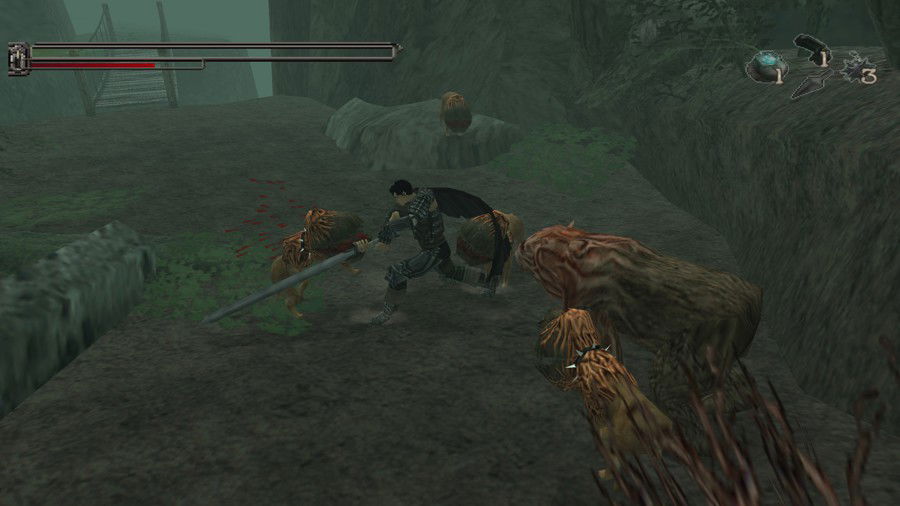
The graphics are superior to the first Dreamcast game, with a dark color palette, but the textures are poorly defined. The pre-rendered cutscenes really showcase the gothic aesthetic, bringing all of the fantasy of the manga to the screen. The soundtrack features voice acting from the original cast of the 1997 anime, which increases fans’ hype.
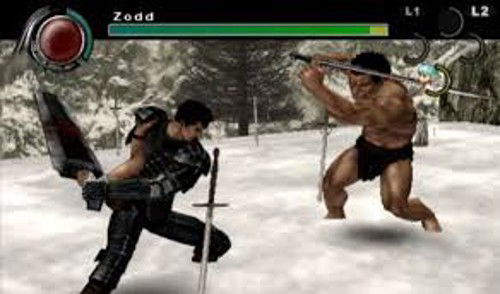
The combat system has finishing moves activated by the Sigil of the Mark of Sacrifice, as well as timed counterattacks that reward the player's precision, such as cutting out Kelpie's tongue, reproducing famous scenes from the manga. Secondary weapons, such as the crossbow, have a timed cooldown, encouraging their use. Progression has experience points that allow for visual and skill upgrades, such as new sword animations. It’s very challenging, with bosses like Zodd and Grunbeld.
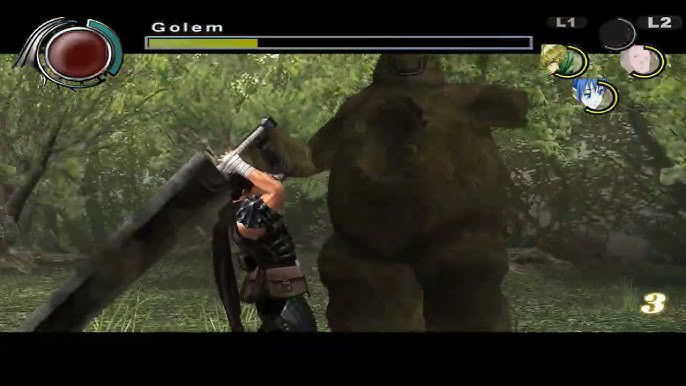
The game is highly praised for its narrative fidelity, but sensitive scenes from the manga were removed to keep the age rating. Even though many consider the villain Charles to be an unnecessary introduction that interrupts the flow of the main plot, more enemies bring more combat fluidity to the game.
The Berserk series offers an authentic experience of a game based on a manga, bringing the entire dark universe of Kentaro Miura to your screen.
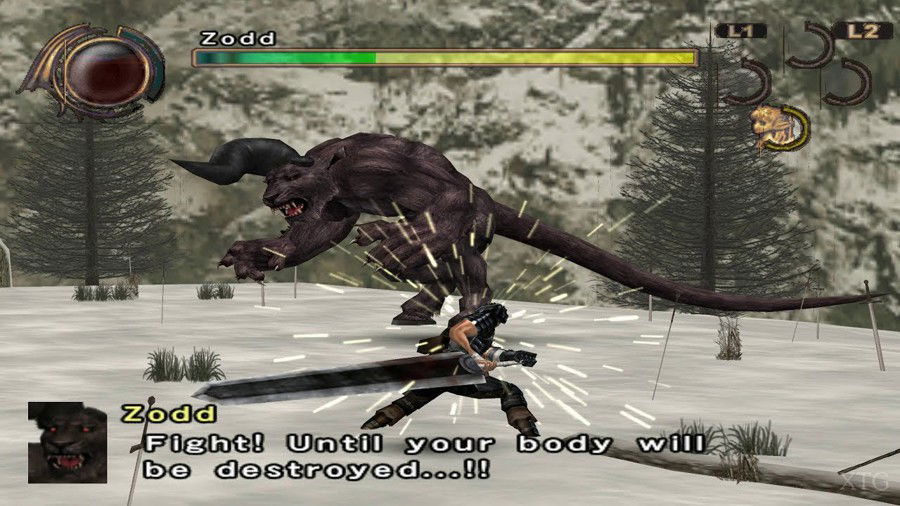
Gungrave
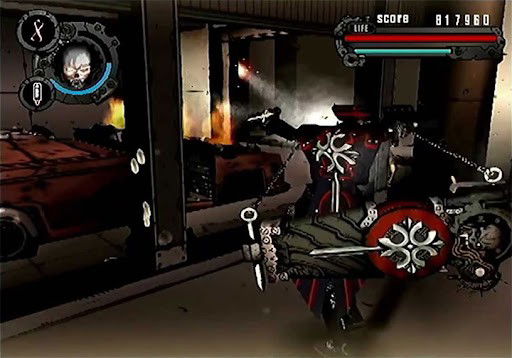
Gungrave is a third-person shooter that prioritizes frenetic action and tactical complexity. The player controls Grave, a resurrected anti-hero on a revenge quest against the criminal organization Millennion. The narrative’s inspired by animes such as Trigun (created by Yasuhiro Nightow, who collaborated on the game's design) and it’s very focused on cinematic cutscenes and dialogues loaded with a noir atmosphere.
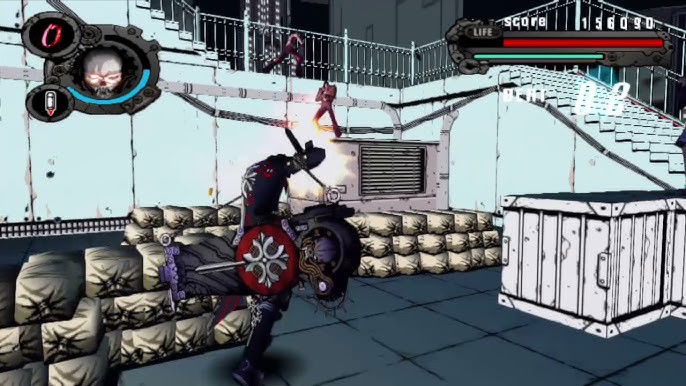
With an aesthetic that mixes cyberpunk and western, the graphics are in cel shading with destructible scenarios that stand out throughout the campaign. The anime cutscenes bring elegance and depth to the game, with a soundtrack that ranges from electronic jazz to rock, complementing the game's atmosphere.
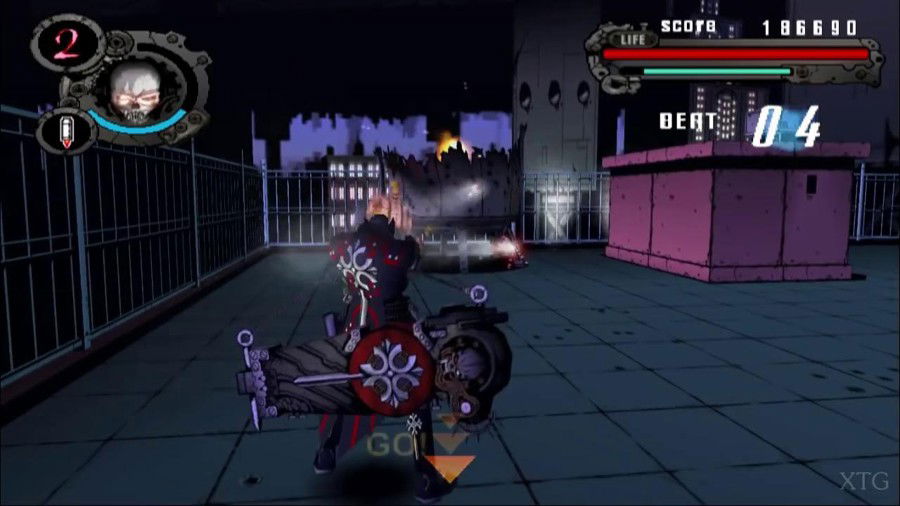
However, the game's biggest highlight is the frenetic action of non-stop shooting. Grave's Cerberus gun has no reload and infinite ammunition, which makes the game aggressive with a tone of unbridled madness. The system rewards continuous combos, which fill up a meter that unlocks devastating special attacks, such as the Demolition Shot, capable of eliminating hordes of enemies. Movement includes dodging and jumping in style.
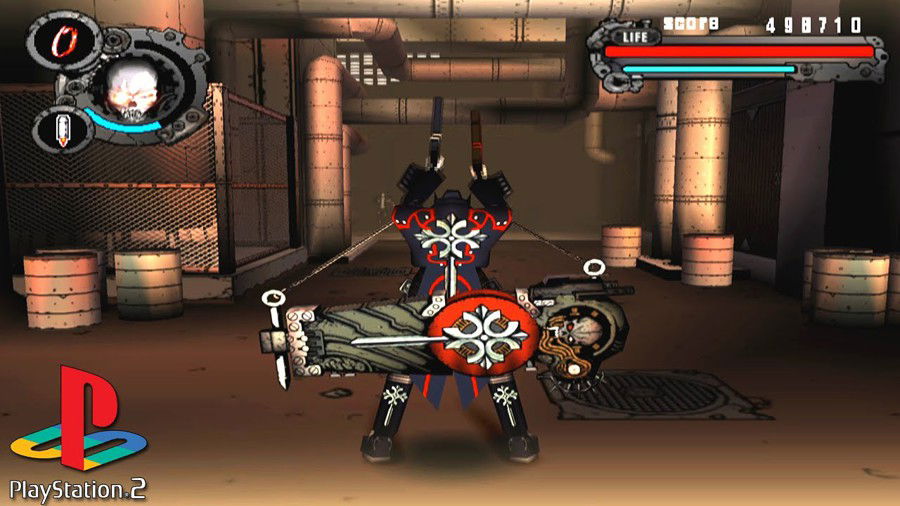
Even though the game has frenetic action, Gungrave is criticized for its short campaign, about 2 hours long. Despite this, the game makes up for it with a lot of fun and with the Boss Rush mode, for those who seek high rankings and hours of extra replayability.
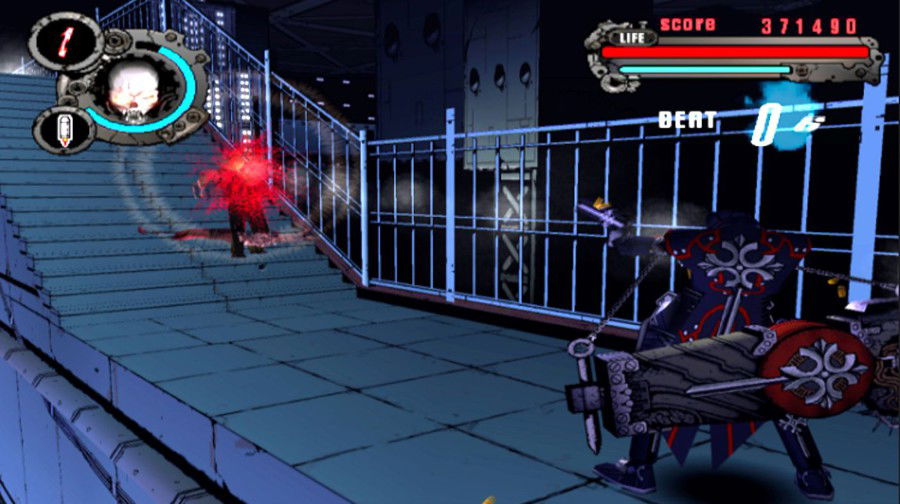
Gungrave is a classic for fans of arcade action with an anime aesthetic. Its influence is visible in games like Devil May Cry and Vanquish. Its boldness in prioritizing a unique style guarantees a nostalgic experience.
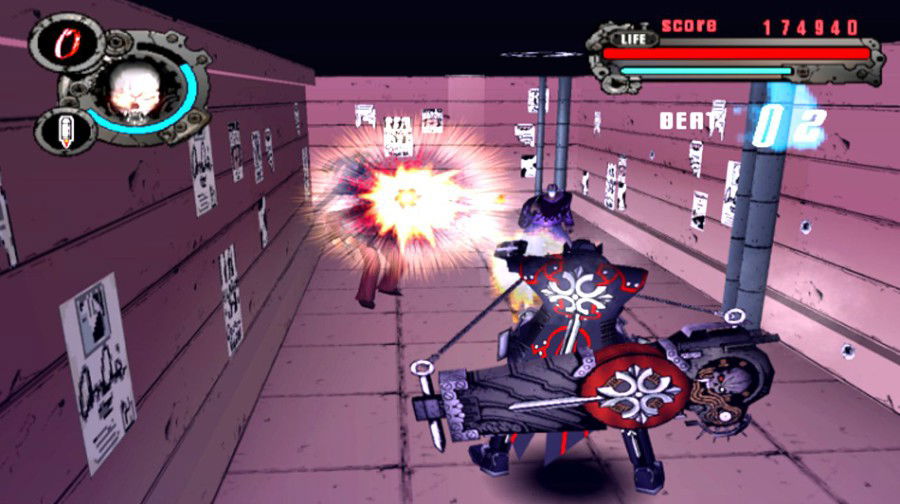
God Hand
Released by Clover Studio and directed by Shinji Mikami (Resident Evil), God Hand is a beat 'em up that defies the genre with its combination of visceral combat, absurd humor and unforgiving difficulty. The player controls Gene, a fighter with a divine arm who faces off against demons in a plot full of slapstick jokes and many references to 80s anime, such as Hokuto no Ken (Fist of the North Star).
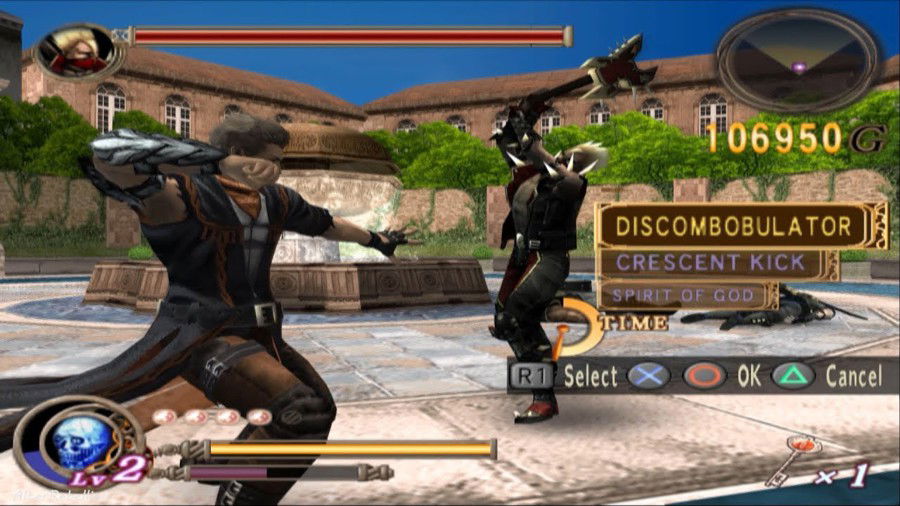
The combat system is the big highlight of God Hand. With over 100 customizable moves, the player creates unique combos using the buttons on the controller, balancing quick attacks such as punches and kicks with moves like the iconic kick to the downstairs area. The game mechanics allow you to perform special skills, while the Tension Gauge grants temporary invincibility, essential against the most brutal bosses like the gorilla with the lucha libre mask. The dodges controlled by the right analog stick and the aggressive enemy AI require precision from the player, bringing a feeling reminiscent of arcade classics like Final Fight, but with more modern technique.
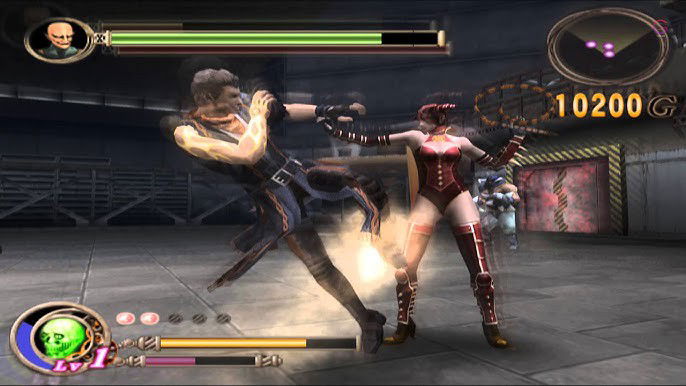
The cel-shaded graphics are beautiful, with simple scenarios that make up for it with the crazy character designs, along with a soundtrack that mixes rock and jazz. The cutscenes are very comical, with absurd dialogues and references to the Matrix, making the game lighthearted with just the right amount of exaggeration.
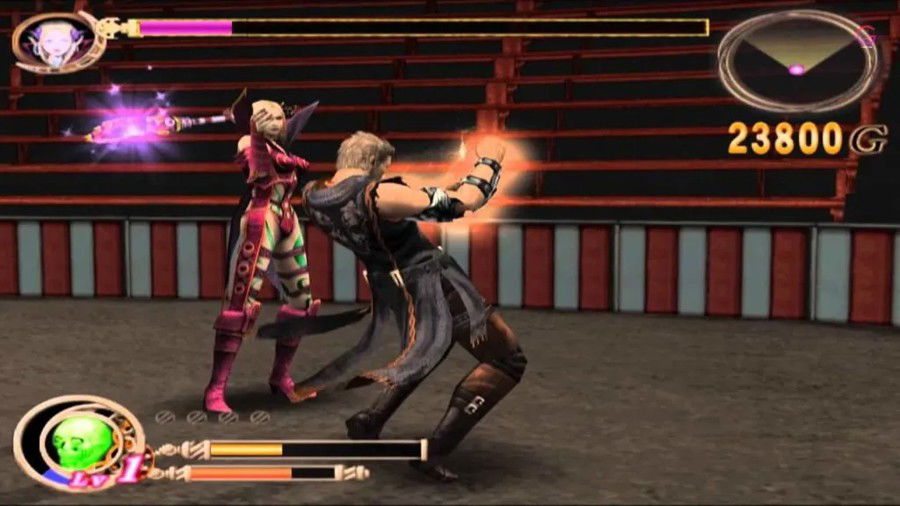
God Hand is a PlayStation 2 gem, perfect for action fans who enjoy dark humor and complex mechanics, challenges and creative freedom. Its influence is noticeable in more modern games like Sifu and Bayonetta, leaving behind a bold legacy from the PS2 era.
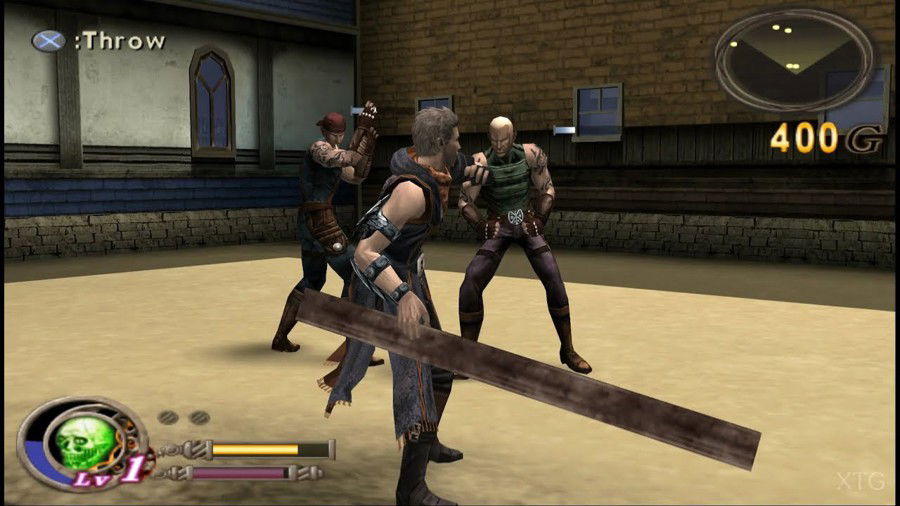
Prince of Persia (Series)
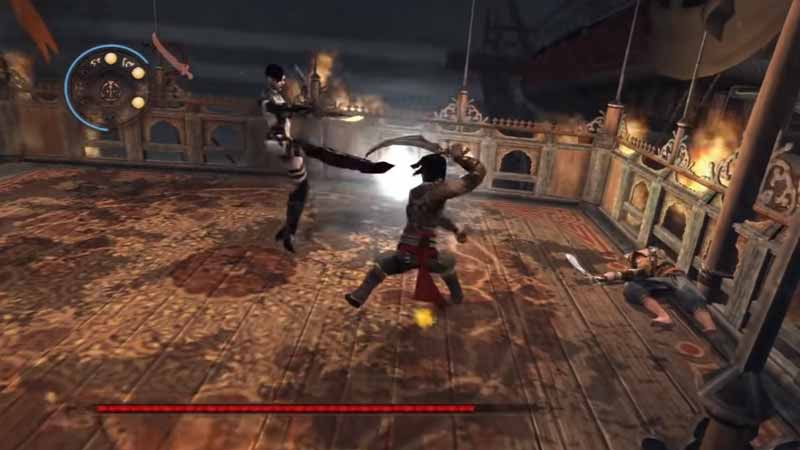
The Prince of Persia trilogy is a landmark in action-adventure games, combining a compelling narrative, fluid parkour, and innovative mechanics within the genre. The series reimagines the legacy of the classic Prince of Persia franchise, balancing platforming challenges, strategic combat and a unique mythology about controlling time.
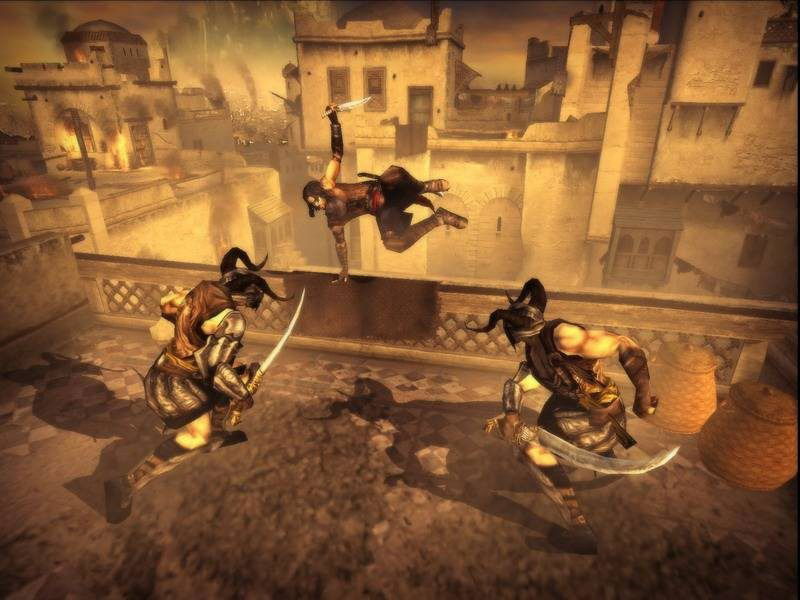
The Sands of Time is the first title and it already arrived as a genre-redefining masterpiece. Anticipating mechanics from games like Assassin's Creed, the game has an intuitive movement system, the Prince climbs walls, jumps between platforms and dodges traps with a fluidity never seen before in games. The mechanic of rewinding time using the Dagger of Time to correct fatal errors not only reduced frustration, but encouraged players to try out new things, making each jump and combat a cinematic experience.
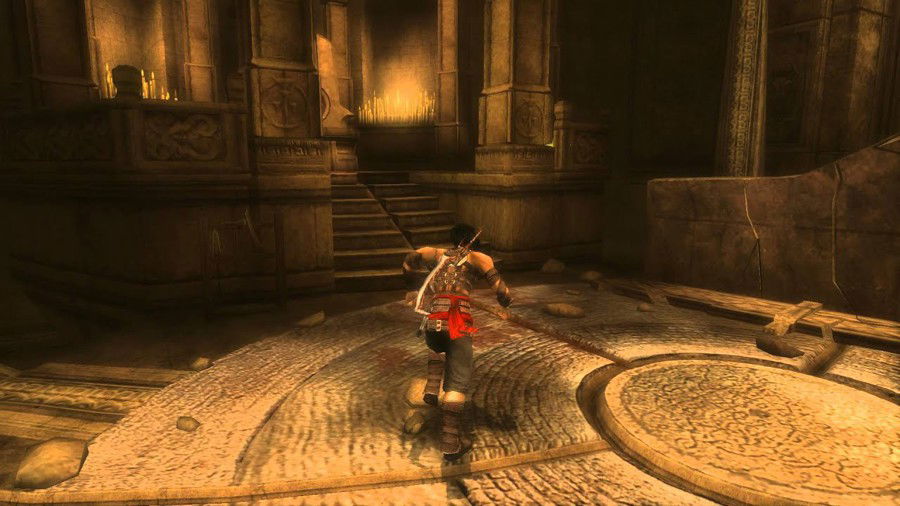
The story is told by the Prince himself in flashbacks, mixing romance and tragedy, with chemistry between the protagonist and Princess Farah. The visuals, inspired by Ico, stand out for their cel shading aesthetic and grand environments, such as ruined palaces and icy caves.
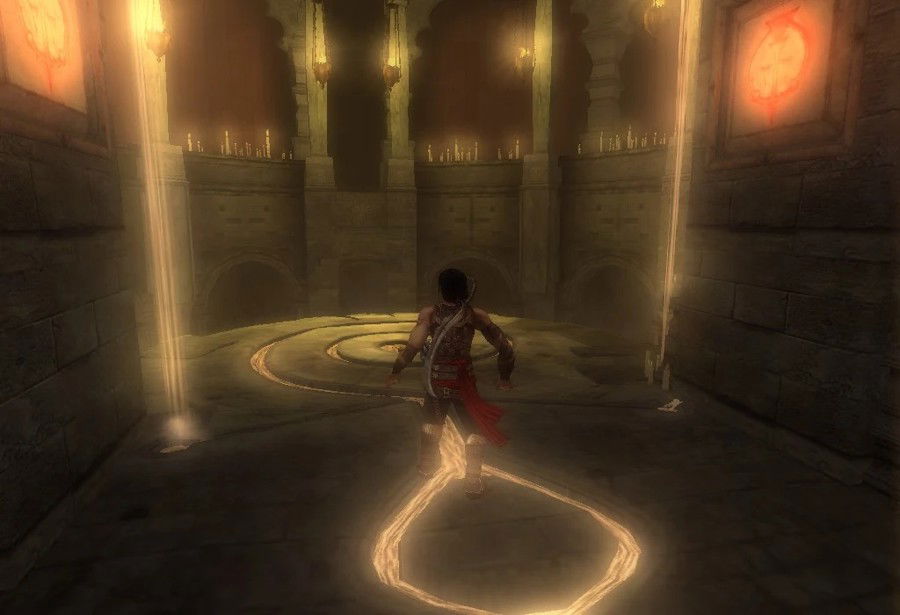
In 2004, the sequel, Warrior Within, arrived, adopting a more aggressive style. Now, the Prince is pursued by Dahaka, a relentless time entity. The gameplay expanded the combat, going beyond acrobatic blows, introducing dual weapons and a "rage" system to defeat hordes of enemies. Exploration became more complex. Despite the innovations, Warrior Within was criticized for excessive violence and a less cohesive story, moving away from the original. However, it kept the parkour foundations and added strategic depth to the battles, bringing more identity to the series.
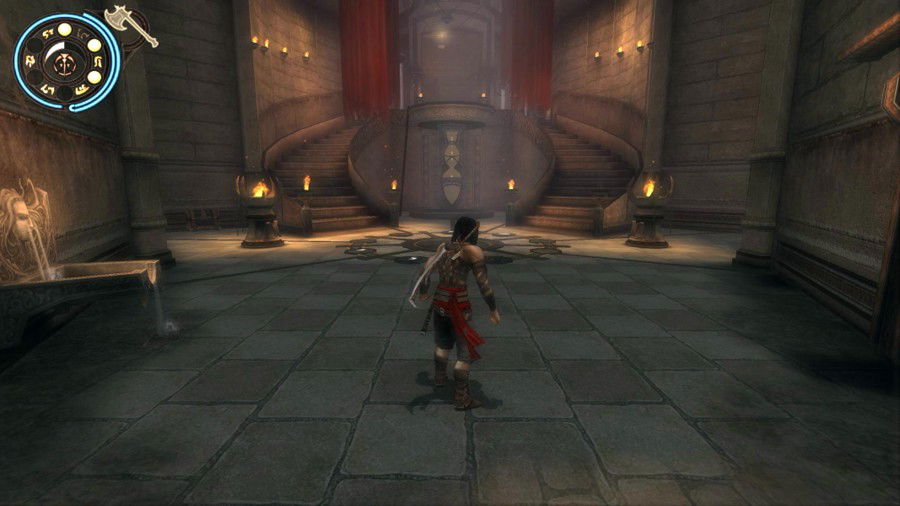
The Two Thrones is the final chapter in the series, unifying elements from the first two games. The Prince, now torn between his human self and a dark counterpart (the Prince of Sands), faces moral dilemmas as he frees Babylon from a tyrant.

Combat’s been refined, with chariot chase sequences and duels, and the introduction of "stealth assassination" added more tactics to the game, allowing you to eliminate enemies silently. The game also kept the grand, architectural look, with settings such as elevated gardens and submerged temples.
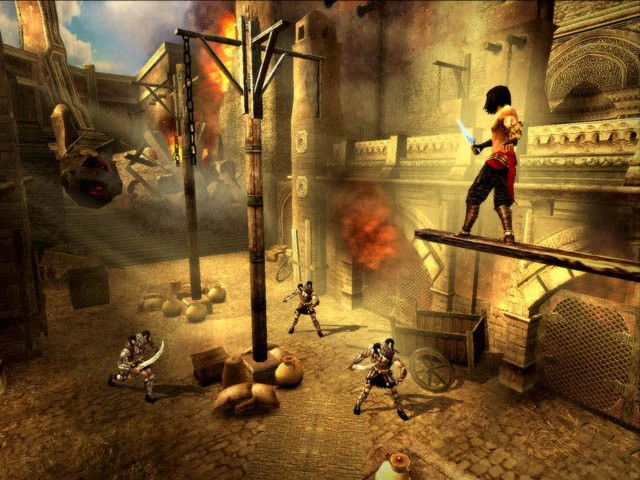
The Prince of Persia trilogy not only revitalized a classic video game franchise, but also influenced genres such as Metroidvania and Soulslike, with its precise parkour and mythology-rich story. An essential series to understand the evolution of action-adventure games, where each title shows its ambition to balance style and reinvention.
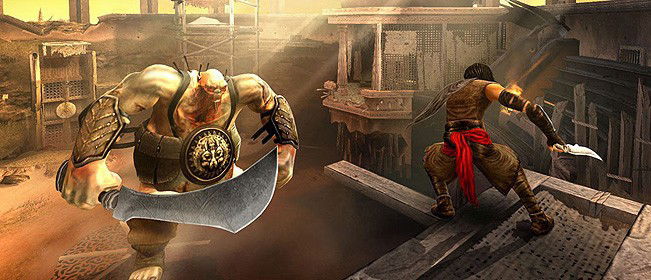
God of War (Series)
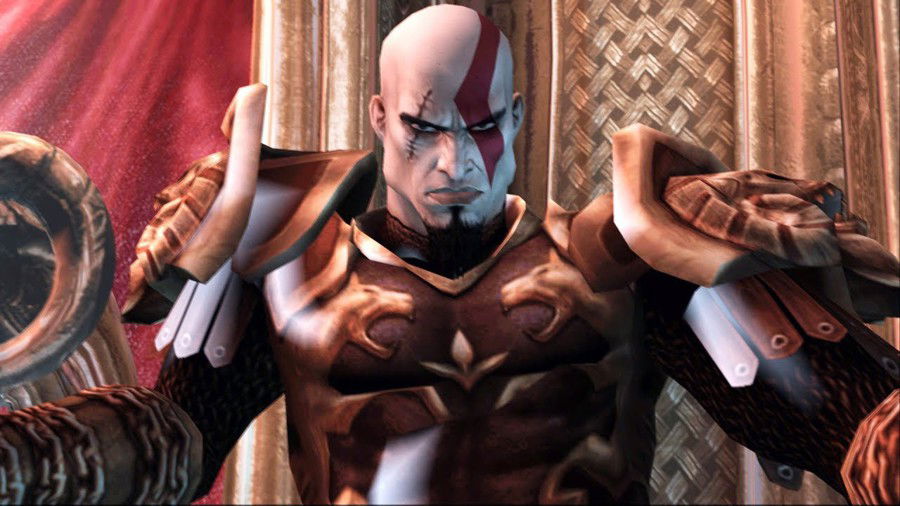
I couldn't end this list without mentioning one of the greatest, if not the greatest, classics of the PlayStation 2. God of War had two games released on the PS2 that were landmarks in action games, putting together a bloody story, brutal combat, visceral scenes and a unique immersion in Greek mythology.

Starring Kratos, a Spartan marked by the gods’ betrayal, the series reinvented the hack-and-slash genre with fluid mechanics and a cinematic approach that influenced future generations of games.
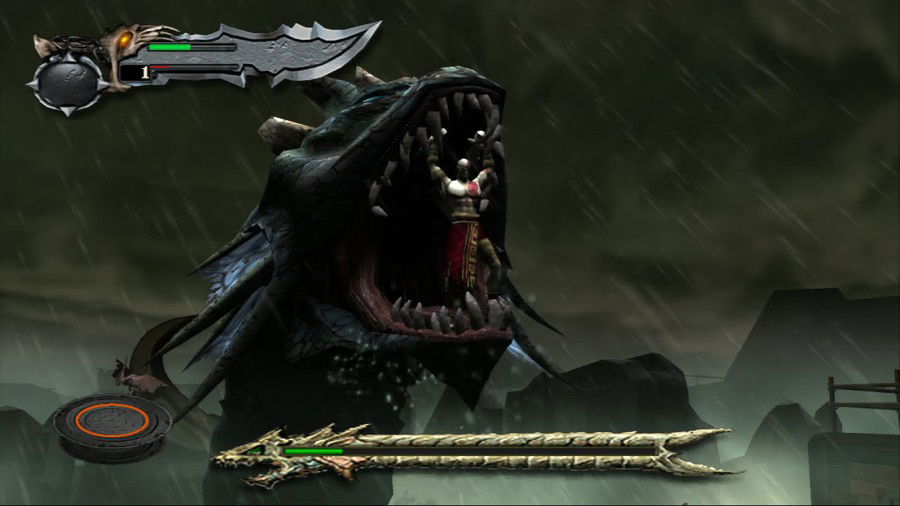
The PS2's graphics were pushed to the limit, with detailed environments like the Temple of Pandora and Athens in flames, as well as expressive character models. Kratos' revenge story against the Olympian gods, especially Ares and Zeus, immediately captivated players. Cinematic cutscenes and flashbacks, like the unintentional slaughter of his own family, helped creating a complex anti-hero.
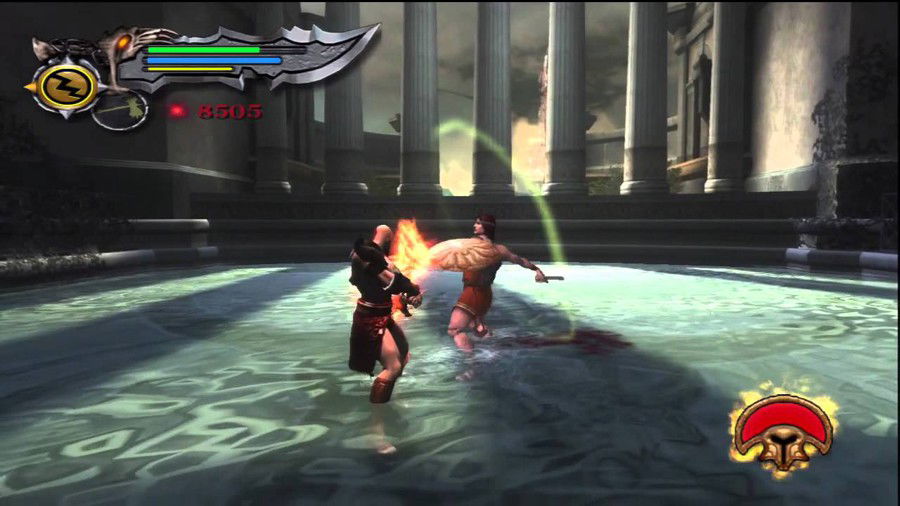
God Of War has frenetic combats, where Kratos uses the Blades of Chaos to dismember enemies in gorgeous sequences. The combo system, together with spells such as Zeus’ Fury and Poseidon’s Rage, allows for devastating combinations, while quick-time events add drama to brutal executions on bosses like the Hydra and Ares himself.
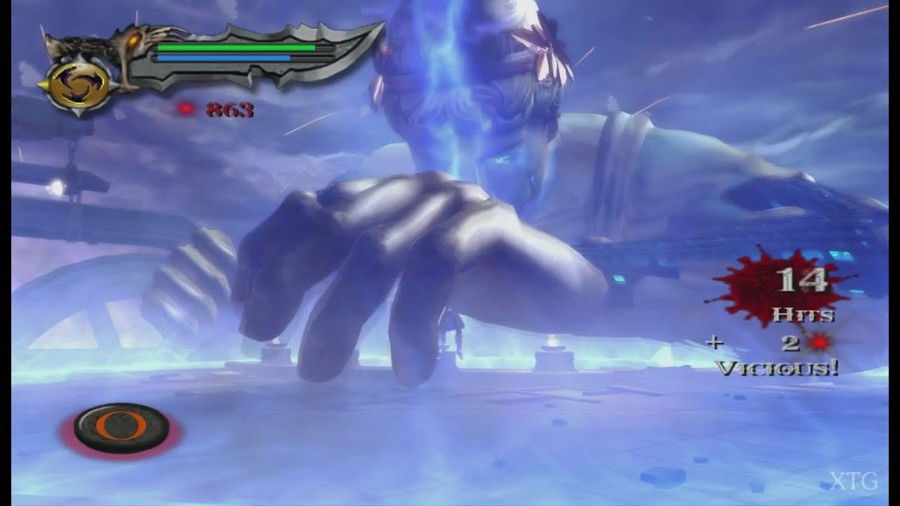
The second game expanded the arsenal with weapons such as the Blades of Olympus and introduced grander settings like the Colossus of Rhodes, taking the game to a level never seen before on consoles.
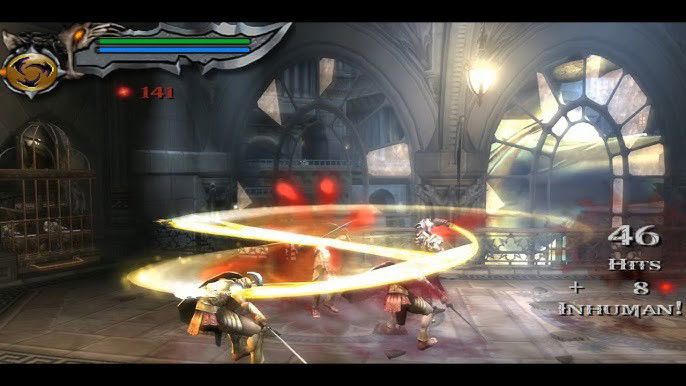
Considered one of the best sagas on the PS2, God of War influenced franchises such as Devil May Cry and Bayonetta, in addition to popularizing quick-time events, the QTEs and cinematic narratives in games. Its critical reception and million-dollar sales elevated Kratos to the status of a video game icon.
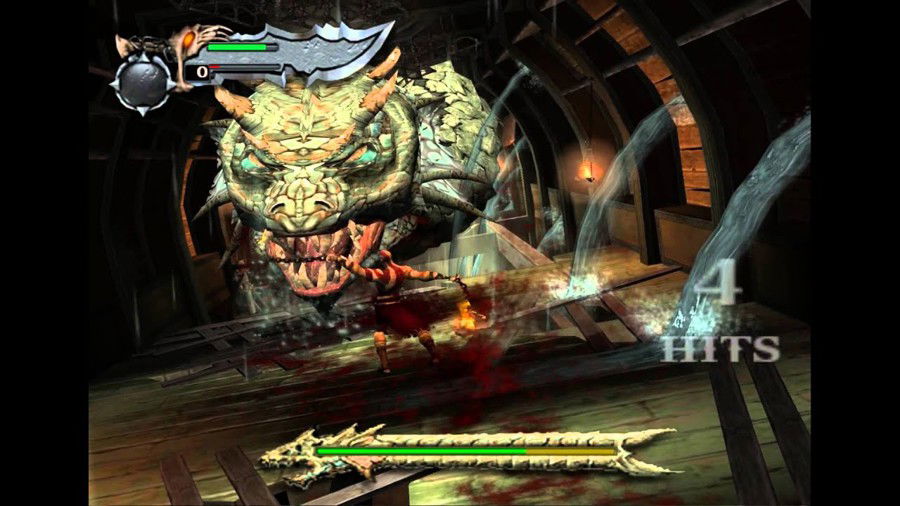
Conclusion
The PlayStation 2 was active for 13 years (2000-2013), becoming a cultural and technical icon and holding the title of best-selling console in history. It brought us revolutionary games, consolidating home entertainment.
Even after the launch of its successor, the PS3, the PS2 continued to sell, reaching a mark of 50 million additional units, proving its relevance in the video game market. Its legacy influenced game design and nostalgia that inspire developers to this day.
And how about you, did you miss any classics on this list? Comment here cause I'd like to know.









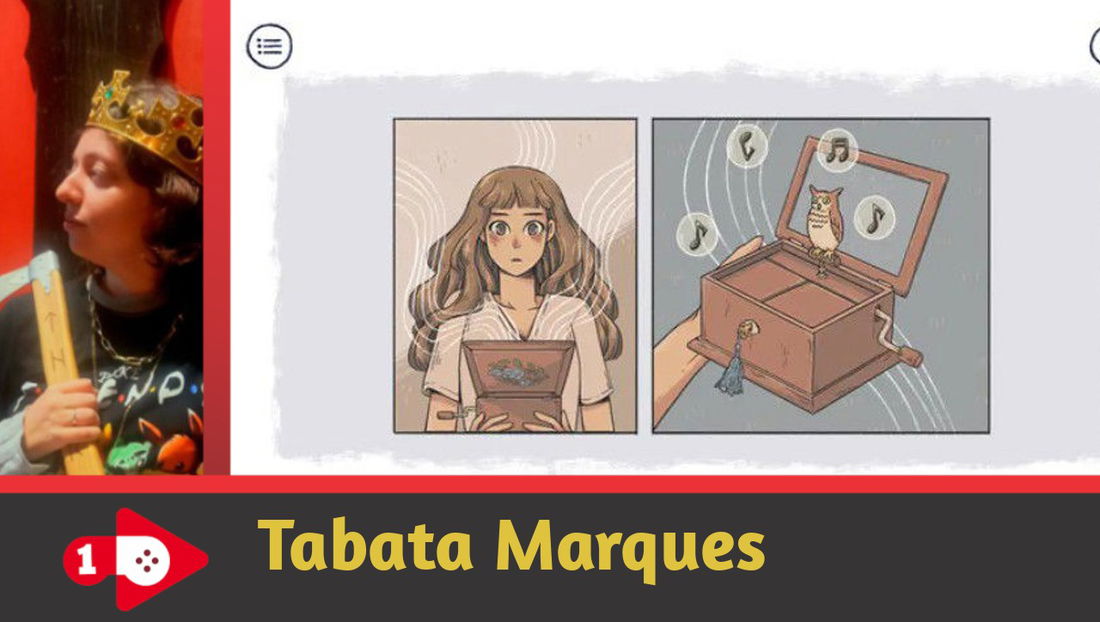
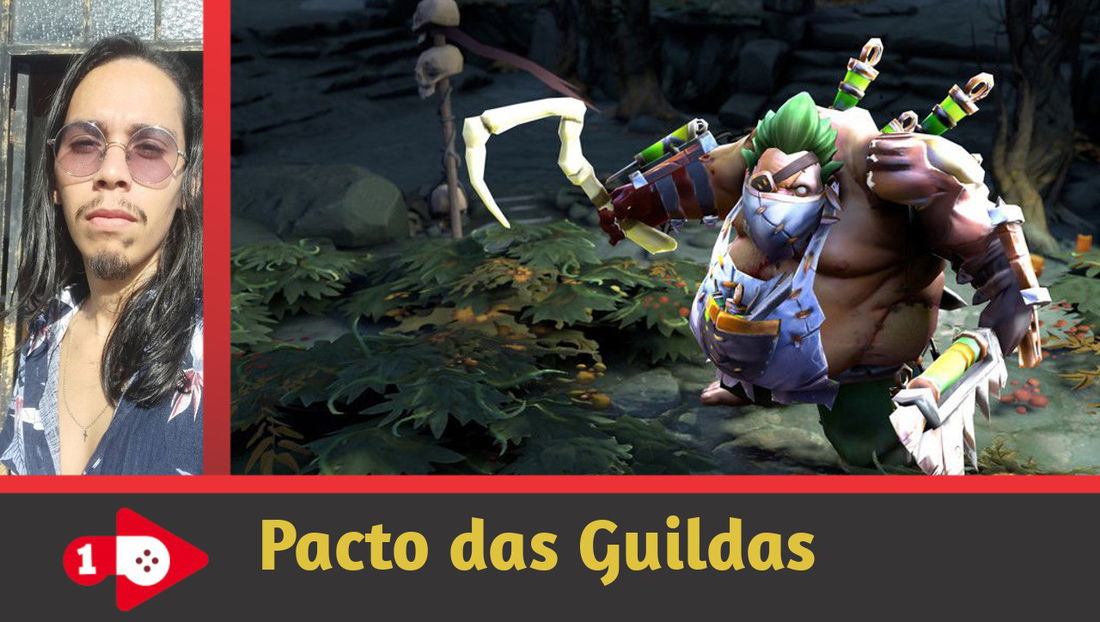



— Comments 0
, Reactions 1
Be the first to comment